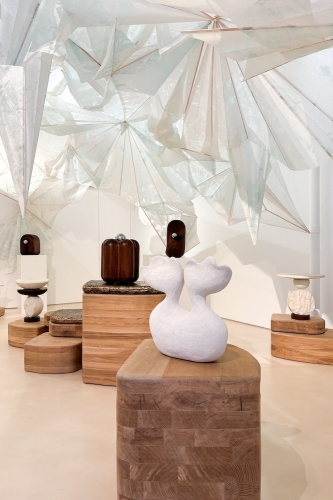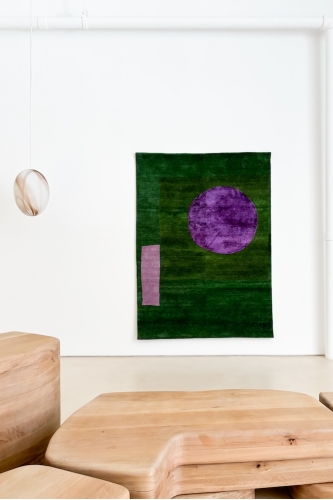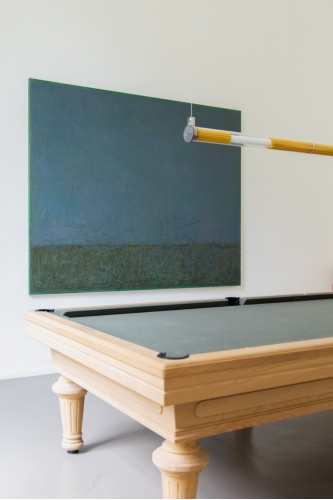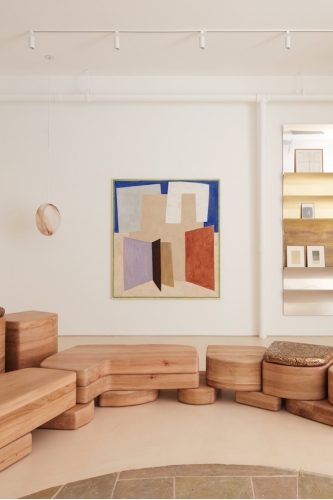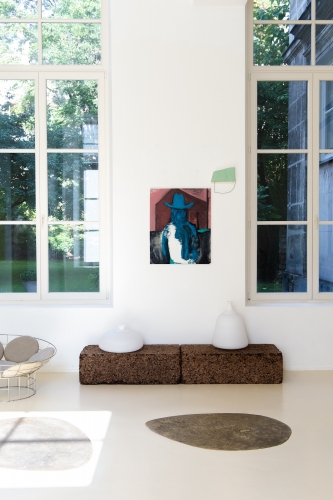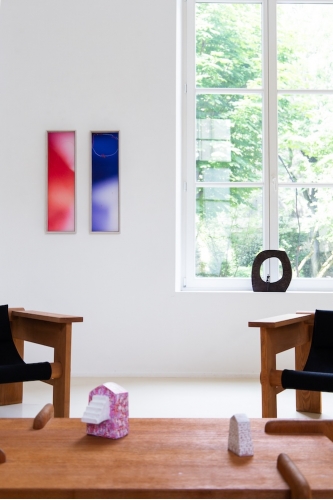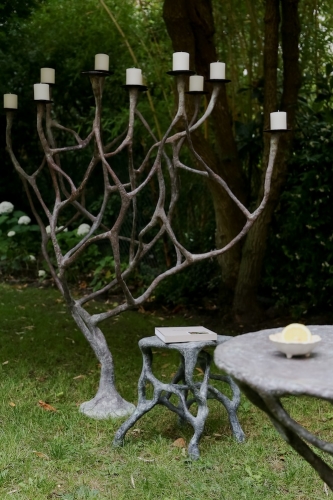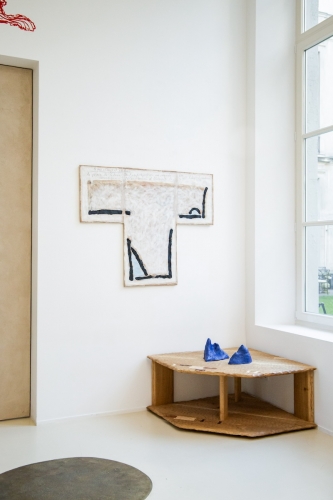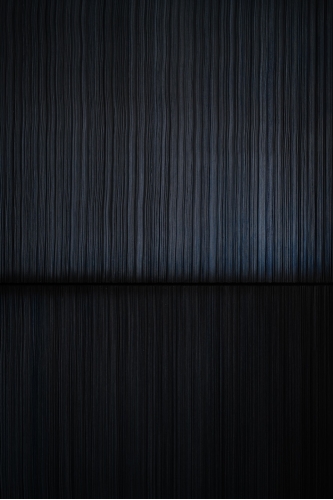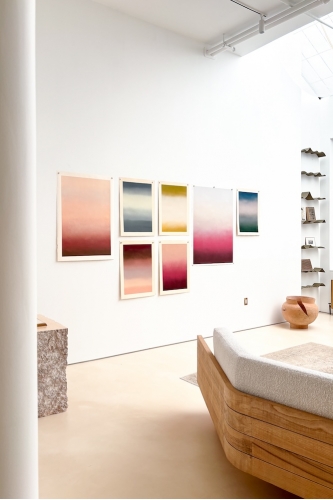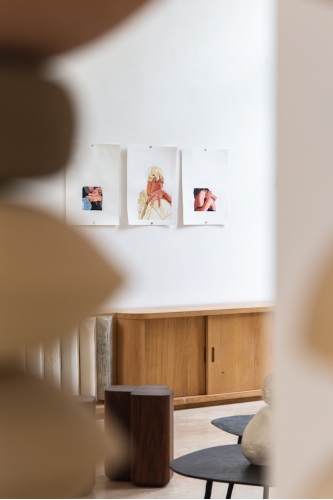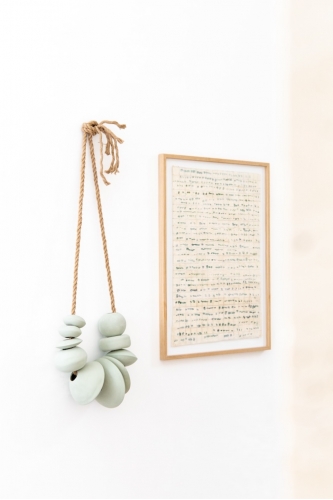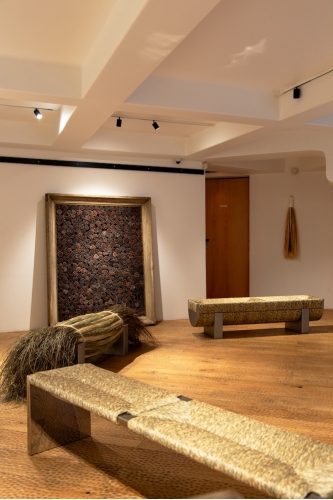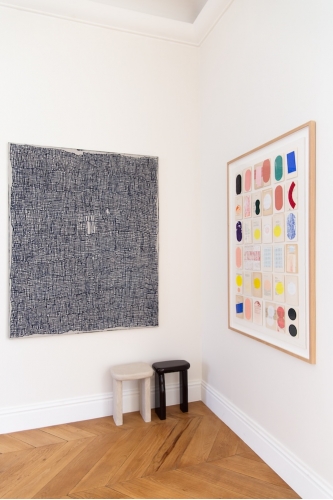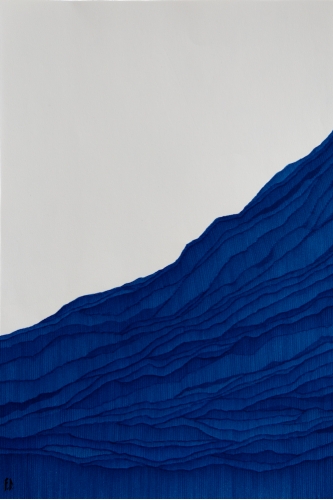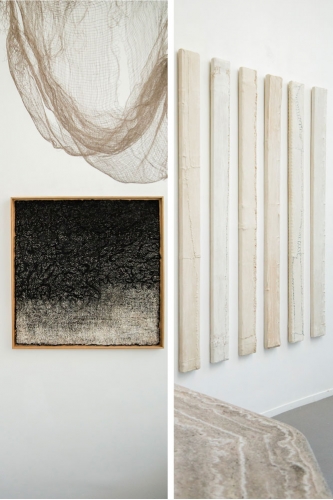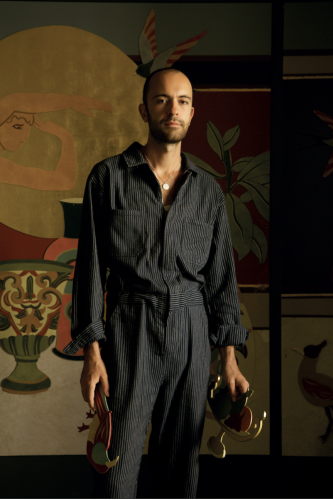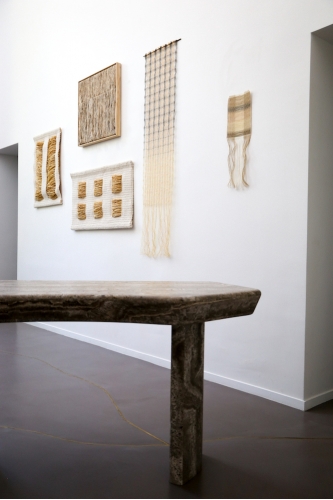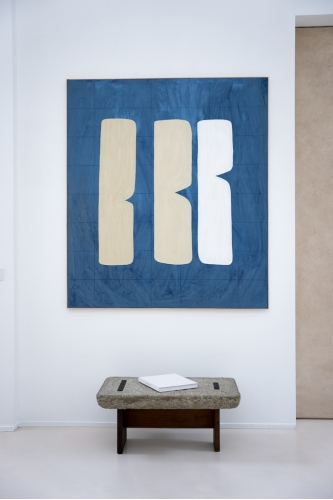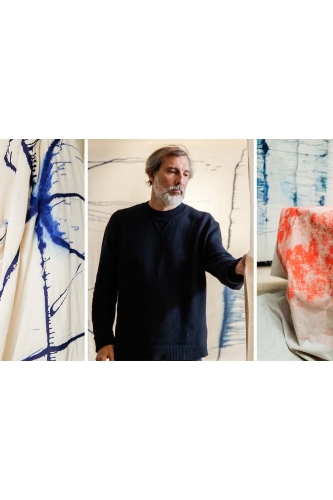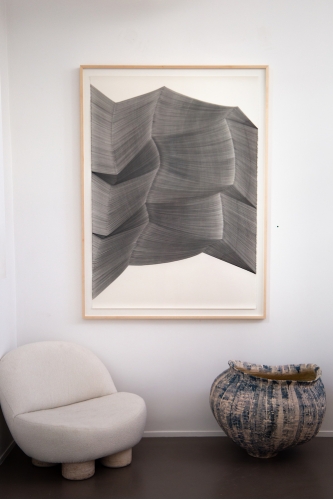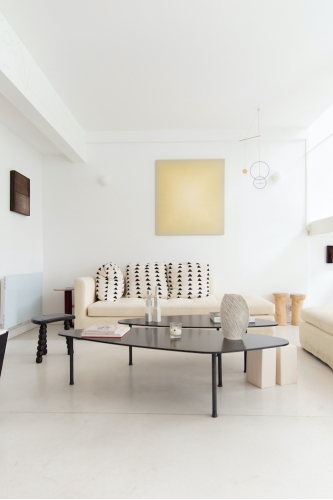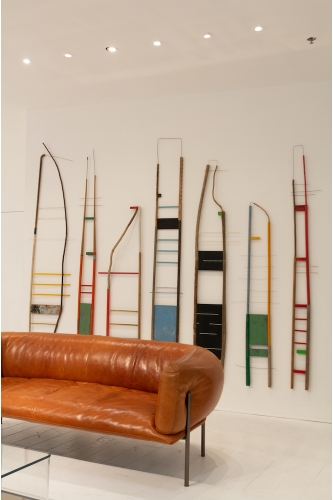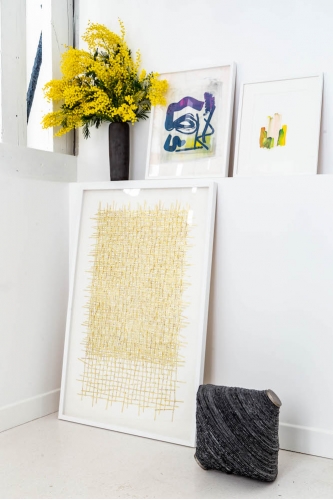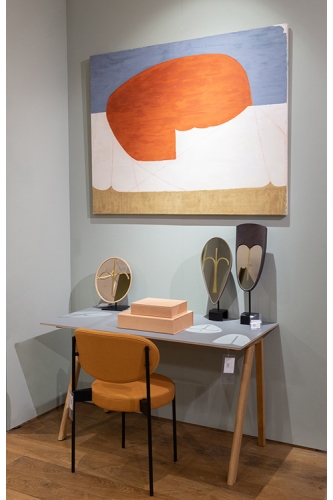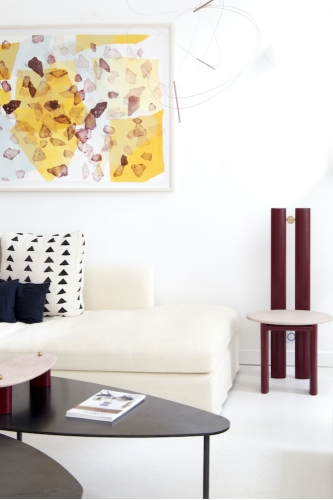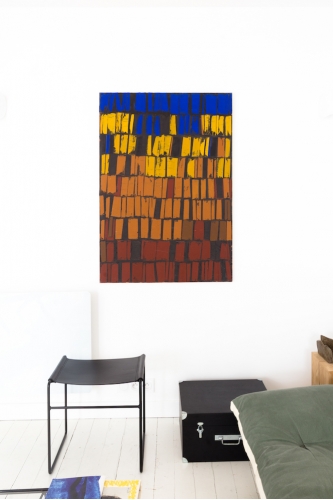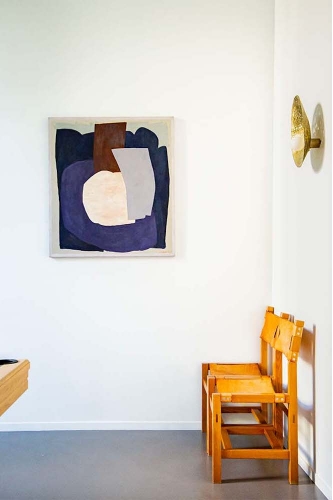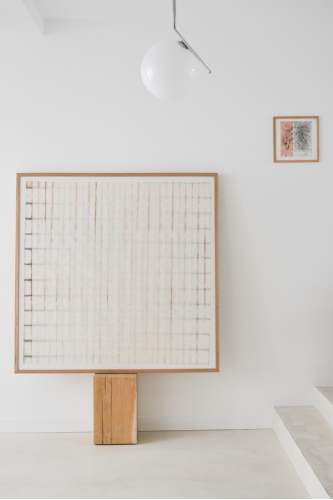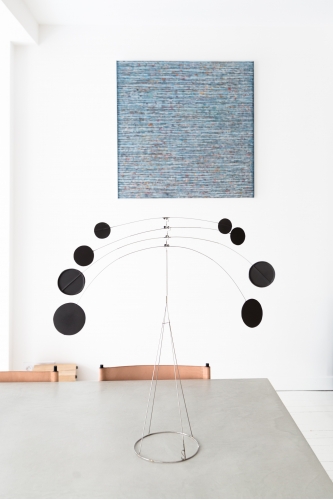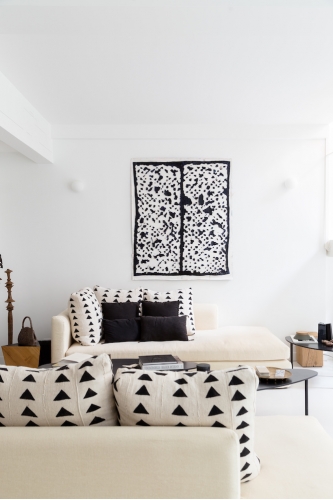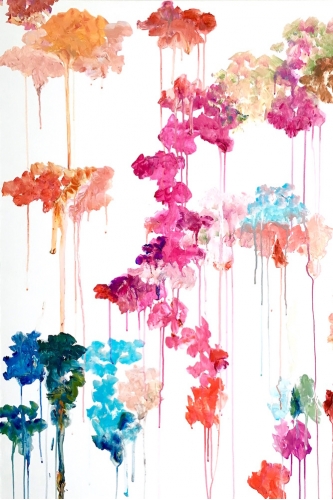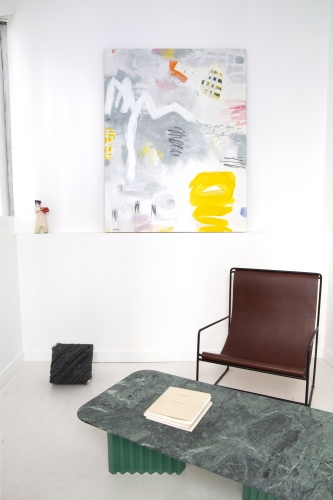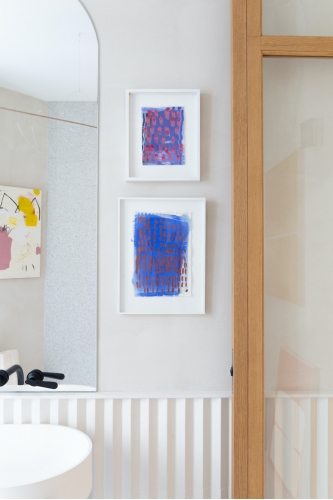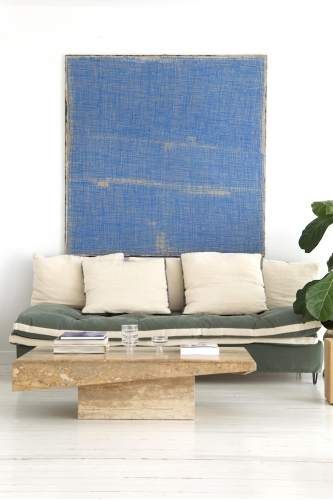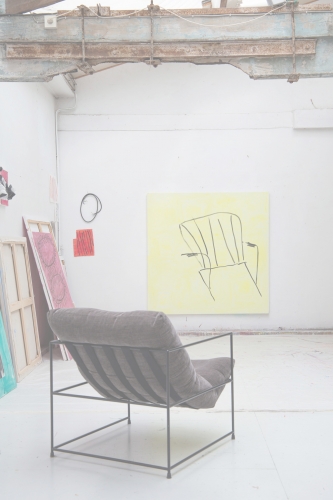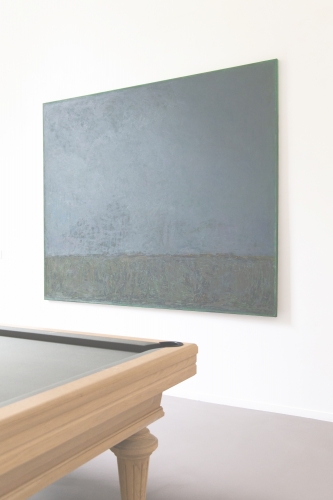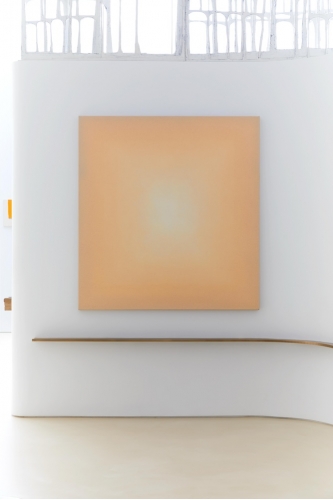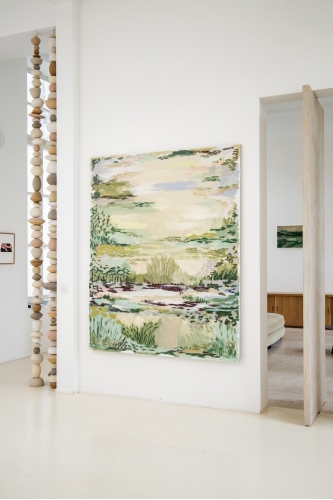exhibitions
see more
PAST EXHIBITIONS
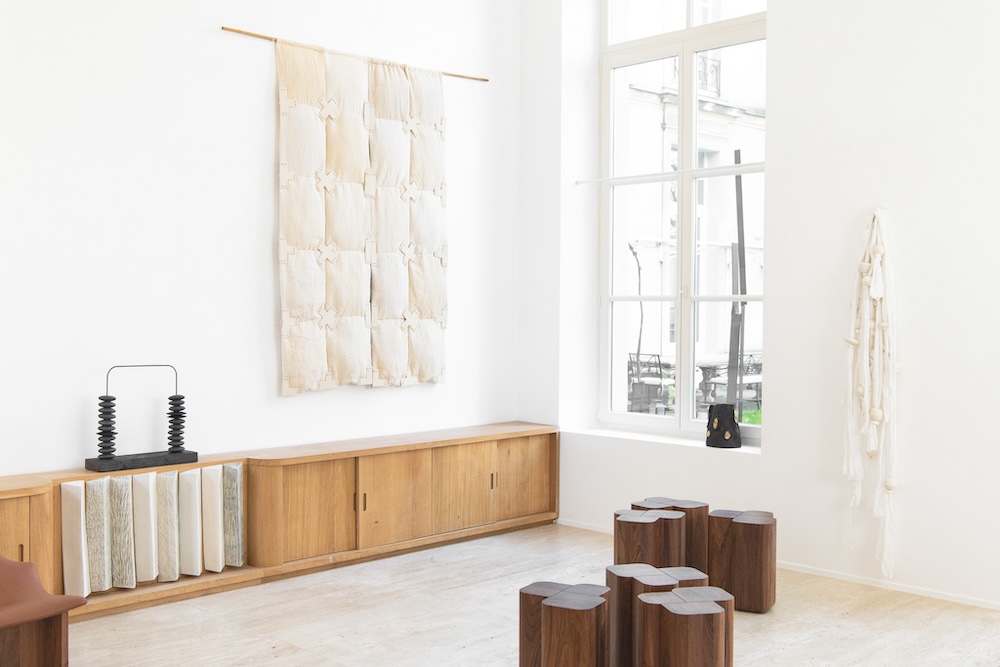
ronde
Catherine Danou & Lili Delaroque
Mars 2024
Catherine Danou doesn't check the boxes. Exiting or staying, these are the broad questions posed by her unfinished grids, covered with fingerprints, writings, indecipherable signs drawn by hand or brush. With this index of seemingly similar yet different stains, the former jurist upends the established order. Lokta, her preferred medium, aligns with her viewpoint: manufactured in the East of the Himalayas, this traditional Nepalese paper harbors strings she removes or duplicates, altering the trajectory of these lifelines. Hue and consistency vary with the rainy season: snow or coffee, frail or armed, the profile, never typical, guides her "music" played incessantly in a muted tone. Whether she manipulates the reverse side, whitens, or constructs the front, Danou economizes, discarding unnecessary gestures to make room for chance. Thus, her "coincidences," torn papers hastily assembled according to border agreements, tone disagreements. Her "retracted" palette is not devoid of colors: red and mint, blue and yellow form disjointed pairs here and there, whose harmony recalls the scores of Paul Klee, Nicolas de Staël. Elsewhere, the outrenoir of Soulages infuses its weaves, akin to the secret alphabets of Henri Michaux or Pierrette Bloch. For it's in the interval, where "the eye circulates," freed yet everywhere solicited, that the work speaks. Or more precisely, "whispers."
In the earth, only her hands plunge, but her whole being drowns. Fishing is often good. For Lili Delaroque hauls up in her nets pearls by the thousands. Pale or brown, the color of sand or algae, these matte ceramic corollas seem to come from the depths of the seas. Each has its fragile form, its smooth curves, as if polished by the surf, perfectly imperfect. Lili Delaroque welcomes the accident: alive, her raw material stands up to her, docile when she's zen, rebellious when her mind wanders, her movements clumsy. So she ensures to maintain balance, that inner peace without which nothing happens. She who worships Japan, an ancient passion never faded, says she "honors" the clay she watches rise, dry, before threading it onto hemp strings, rusty metal, old linens, all kinds of found objects, natural and poor. Thus, this Japanese rope striped with beige and cobalt blue stoneware, twisted on the wall like a snake's molt. Or this makeshift Noren with tired cushions, "cakes" blown by the cream palette connected to each other by "pluses," profane crosses sewn at regular intervals. Traps or necklaces, these antiquities cultivate the art of the hand, an insular art, nourishing, that of origins. And invite to the motionless journey, memories of some rite, foretastes of a possible departure.
Virginie Huet




